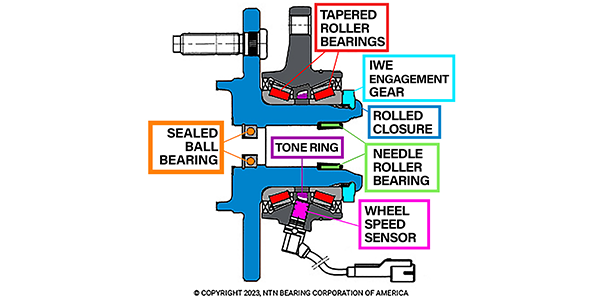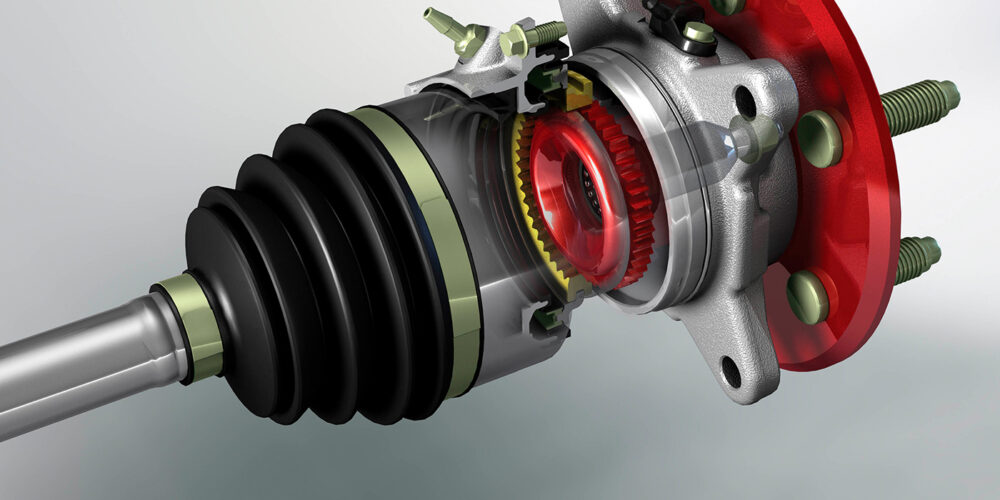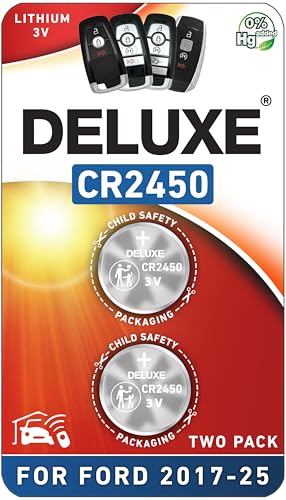As an Amazon Associate, I earn from qualifying purchases
If you own a Ford F150 or are thinking about getting one, you might have come across the term “IWE” and wondered what it means. Understanding IWE can make a big difference in how your truck handles different driving conditions.
Knowing how this system works will help you get the most out of your F150, whether you’re cruising on the highway or tackling rough terrain. Keep reading to discover what IWE is, why it matters, and how it can improve your driving experience.
Iwe Basics
The Integrated Wheel End (IWE) is an important feature on some Ford F-150 trucks. It helps control the truck’s four-wheel drive system. Understanding IWE basics can help you know how your truck works and when to maintain it.
The IWE is a type of locking hub. It allows the front wheels to connect or disconnect from the drive axle. This connection helps the truck switch between two-wheel drive and four-wheel drive.
The Role Of Iwe In Four-wheel Drive
The IWE automatically engages the front wheels in four-wheel drive mode. It uses vacuum pressure or electrical signals. This system eliminates the need to manually lock or unlock the hubs.
When four-wheel drive is off, the IWE disconnects the front wheels. This reduces wear on parts and improves fuel efficiency.
How Iwe Works On Ford F-150
The IWE unit is inside the front wheel hub. It connects the axle shaft to the wheel. A vacuum or electrical actuator moves the locking mechanism.
When activated, the IWE locks the wheel to the axle. This sends power to the front wheels for better traction.
Common Iwe Problems
Vacuum leaks can cause the IWE to fail. This stops the front wheels from locking properly. Dirt and rust may also damage the locking mechanism.
Signs of IWE trouble include noise, vibration, or four-wheel drive not engaging. Regular checks can prevent bigger issues.
Iwe System Components
The IWE system on the Ford F150 helps control the front axle. It lets you switch between two-wheel drive and four-wheel drive. This system improves traction and fuel efficiency.
The IWE system has several key parts. Each part plays a role in how the system works. Understanding these components helps you know how the system keeps your truck ready for different roads.
Electric Actuator
The electric actuator controls the locking and unlocking of the front axle. It gets signals from the transfer case. The actuator moves the locking collar inside the hub.
Locking Collar
The locking collar connects the wheel hub to the axle shaft. When engaged, it locks the front wheel to the axle. This allows power to go to the front wheels for four-wheel drive.
Wheel Hub Assembly
The wheel hub assembly holds the wheel in place. It also contains the IWE system parts. The hub rotates freely in two-wheel drive mode.
Transfer Case
The transfer case sends power to the front and rear axles. It controls when the IWE system activates. It works with the electric actuator to engage the front axle.
Control Module
The control module manages the IWE system’s actions. It receives input from sensors and driver commands. The module tells the actuator when to lock or unlock the hub.
How Iwe Works
The IWE, or Integrated Wheel End, on a Ford F150 helps control the front axle’s locking system. It allows the truck to switch between two-wheel drive and four-wheel drive modes automatically. This system improves traction and driving stability on different road surfaces.
The IWE uses air pressure to engage or disengage the front axle. When the truck detects a need for extra grip, it sends air to the IWE unit. This action locks the front wheels, allowing power to flow to them. When extra traction is not needed, the IWE releases the lock, saving fuel and reducing wear on parts.
Air-operated Mechanism
The IWE uses air pressure from the truck’s compressor or vacuum system. This pressure moves a piston inside the IWE unit. The piston pushes a collar that locks the front axle. Without air pressure, the collar releases, and the front wheels turn freely.
Automatic Engagement
Sensors monitor wheel slip and speed. When slippage occurs, the system activates the IWE. This action locks the front axle quickly. The truck regains traction without driver input. Once the road is clear, the system unlocks the axle automatically.
Manual Override Option
The Ford F150 also has a switch for manual control. Drivers can choose to lock or unlock the front axle themselves. This option is useful in tough off-road conditions. It gives drivers full control over the four-wheel drive system.

Credit: www.brakeandfrontend.com
Benefits Of Iwe On Ford F150
The IWE (Integrated Wheel End) system on the Ford F150 offers several practical benefits. It improves the truck’s performance and ease of use. This system controls the front axle hubs automatically, which helps in various driving conditions.
With IWE, the Ford F150 can switch between two-wheel drive and four-wheel drive smoothly. This makes the truck more efficient and reliable on different terrains. The system also reduces wear on parts, saving on maintenance costs.
Improved Fuel Efficiency
IWE disconnects the front wheels from the drivetrain when not needed. This reduces drag and saves fuel. The truck uses less energy to move forward on normal roads. Drivers notice better gas mileage with IWE active.
Enhanced Off-road Capability
When extra traction is required, IWE quickly locks the hubs. This connects the front wheels to the drivetrain. It helps the truck grip rough or slippery surfaces. Drivers get better control and confidence off-road.
Reduced Wear And Tear
IWE prevents the front axle parts from spinning unnecessarily. This lowers the stress on the axle and bearings. Less wear means parts last longer and need fewer repairs. It keeps maintenance costs down over time.
Automatic Operation
The IWE system works without driver input. It detects when to engage or disengage the front hubs. This removes the need to manually lock or unlock hubs. The driver can focus more on the road and driving conditions.
Common Iwe Issues
The Integrated Wheel End (IWE) on a Ford F150 helps control the front axle locking. It allows the vehicle to switch between two-wheel drive and four-wheel drive smoothly. Despite its usefulness, the IWE can face several common problems. These issues may affect your truck’s performance and cause driving troubles.
Understanding these common IWE issues can help you spot problems early. Fixing them on time saves money and avoids bigger repairs later.
Sticking Or Jammed Iwe
The IWE can get stuck due to dirt or rust. This causes the front wheels to stay locked even in two-wheel drive mode. Driving with a jammed IWE can damage the axle and tires.
Leaks In The Iwe Unit
Leaks often happen around the seals of the IWE. These leaks let gear oil escape, causing lubrication problems. Without enough oil, the IWE parts wear out faster.
Faulty Vacuum Actuator
The vacuum actuator helps engage and disengage the IWE. If it fails, the IWE will not switch properly. This leads to poor four-wheel drive performance and strange noises.
Electrical Or Sensor Problems
Modern IWEs use sensors to control locking. Faulty sensors or wiring can cause the IWE to act unpredictably. This may trigger warning lights on the dashboard.

Credit: www.tomorrowstechnician.com
Symptoms Of Iwe Failure
The IWE (Integrated Wheel End) on a Ford F150 helps switch between two-wheel and four-wheel drive. When it fails, your truck may show certain signs. Recognizing these symptoms early can save you from bigger problems.
These symptoms affect driving comfort and vehicle safety. Watch closely for any unusual noises, handling issues, or dashboard alerts. They often mean the IWE is not working properly.
Unusual Noises From The Front Wheels
Grinding, clicking, or clunking sounds come from the front wheels. These noises get louder when driving in four-wheel drive mode. They point to worn or damaged IWE parts.
Difficulty Engaging Or Disengaging Four-wheel Drive
The truck struggles to switch between two-wheel and four-wheel drive. You may hear a delay or no response at all. This problem shows that the IWE actuator may be faulty.
Four-wheel Drive Warning Light On
The dashboard may light up with a four-wheel drive warning. This alert means the system detected an IWE issue. Ignoring this light can cause more damage.
Vibration Or Shaking While Driving
The vehicle shakes or vibrates at certain speeds. This feeling comes from a malfunctioning IWE unit. It affects the truck’s smoothness and control.
Front Wheels Not Locking Properly
The front wheels fail to lock in four-wheel drive mode. This causes slipping or loss of power to the front axle. It shows the IWE is unable to engage correctly.
Diagnosing Iwe Problems
Diagnosing problems with the IWE (Integrated Wheel End) on a Ford F150 is key to keeping the truck in good shape. The IWE controls the locking and unlocking of the front hubs. Problems here can cause the 4WD system to fail or work poorly. Early diagnosis helps avoid bigger repairs and keeps your driving safe.
Understanding Common Iwe Symptoms
Listen for clicking or grinding noises near the front wheels. Notice any difficulty shifting into 4WD mode. Check for dashboard warning lights related to the 4WD system. These signs often point to IWE issues.
Visual Inspection Of The Iwe Unit
Look for rust or damage on the IWE housing. Check for oil leaks around the IWE seals. Inspect the wiring and connectors for corrosion or breaks. Physical damage often causes IWE failure.
Testing The Iwe Actuator
Use a scan tool to activate the IWE electronically. Observe if the actuator moves the hub correctly. No movement or slow response indicates a faulty actuator. This test helps pinpoint electrical or mechanical issues.
Checking The Front Axle Hub Engagement
Manually check if the front hubs lock and unlock smoothly. Stiff or stuck hubs suggest internal IWE problems. This step confirms if the problem is mechanical inside the hub.
Repair And Maintenance Tips
Repair and maintenance of the IWE (Integrated Wheel End) on a Ford F150 keep the truck running smoothly. Regular care helps avoid costly damage and ensures the 4WD system works properly. Simple checks and fixes can extend the life of the IWE system.
Checking The Iwe Actuator
Inspect the IWE actuator often for dirt and damage. Clean the area around it carefully. Dirt and debris can cause the actuator to stick or fail. Replace the actuator if it shows signs of wear or leaks.
Lubricating Moving Parts
Lubricate the moving parts of the IWE to reduce friction. Use the type of grease recommended by Ford. Proper lubrication prevents rust and keeps the system engaging smoothly.
Examining Wheel Seals
Look at the wheel seals for cracks or leaks. Damaged seals let water and dirt enter, causing internal damage. Replace any worn seals quickly to protect the IWE system.
Listening For Unusual Noises
Listen for clicking or grinding sounds when switching to 4WD. Strange noises may mean the IWE is not engaging correctly. Check the system or visit a mechanic to prevent bigger problems.
Cleaning Electrical Connections
Keep electrical connections clean and dry. Corroded connectors can stop the IWE from working. Use contact cleaner and a brush to maintain good connections.
Iwe Vs Manual Locking Hubs
The Ford F150 offers two types of hubs for four-wheel drive: IWE and manual locking hubs. Both connect the front wheels to the axle but work differently. Understanding their differences helps choose the right one for your needs.
Iwe Hubs: Automatic Engagement
IWE stands for Integrated Wheel End. These hubs engage the front wheels automatically when you switch to 4WD. No need to get out of the truck to turn anything. They use vacuum pressure to lock the hubs in place.
This makes driving easier, especially in bad weather or off-road. The system handles engagement quietly and smoothly. But IWE hubs depend on vacuum lines that can leak or break over time.
Manual Locking Hubs: Simple And Reliable
Manual locking hubs require you to turn a knob on each front wheel. You do this before using 4WD. It takes a few seconds but gives full control.
These hubs have no vacuum parts. This means fewer parts to fail. They are more reliable for rough use and harsh environments. Manual hubs also save fuel by disconnecting the front wheels during 2WD driving.
Choosing Between Iwe And Manual Hubs
IWE hubs offer convenience for quick 4WD activation. Ideal for daily drivers who want ease of use. Manual hubs suit drivers who want durability and control. They work better in tough conditions and long off-road trips.
Keep in mind, manual hubs need you to stop and lock them before driving 4WD. IWE hubs lock automatically but may need repairs on vacuum parts.

Credit: www.amazon.com
Upgrading Or Disabling Iwe
Upgrading or disabling the IWE (Integrated Wheel End) on a Ford F150 can improve your truck’s performance and reliability. The IWE controls the locking of the front hubs, helping your truck switch between two-wheel and four-wheel drive. Some owners choose to upgrade for better durability. Others disable it to avoid problems like noise or failure.
Understanding the options helps you decide what suits your truck best. Below are key points about upgrading or disabling the IWE.
What Does Upgrading The Iwe Involve?
Upgrading the IWE means replacing the factory part with a stronger one. This can include heavy-duty locking hubs or manual hubs. These parts last longer and resist damage. Upgrades reduce the chance of the system failing during off-road use. They also help keep dirt and water out of the hub assembly.
Benefits Of Disabling The Iwe
Disabling the IWE stops the system from engaging or disengaging automatically. Some owners prefer manual locking hubs instead. Disabling prevents noises and problems linked to the factory IWE system. It can also simplify maintenance and repair tasks. This change may improve the truck’s reliability on rough terrain.
How To Disable The Iwe Safely
Disabling the IWE requires removing or disconnecting its components. It is important to do this carefully. Incorrect steps can cause damage or affect four-wheel drive function. Many owners use manual hubs after disabling the IWE. Professional help or detailed guides can ensure the process is done right.
Frequently Asked Questions
What Does Iwe Stand For On A Ford F150?
IWE means Integrated Wheel End, a system that controls front wheel locking.
How Does Iwe Improve Ford F150’s Off-road Ability?
IWE locks front wheels for better traction on rough or slippery roads.
Is Iwe Automatic Or Manual On The Ford F150?
IWE works automatically, engaging when the truck detects wheel slippage.
Can I Disable The Iwe On My Ford F150?
Yes, some owners choose to disable IWE for more control and fewer repairs.
What Are Common Iwe Problems In A Ford F150?
Common issues include leaks, sensor failure, and noisy wheel hubs.
How Do I Know If My Iwe Is Failing?
Signs include grinding noises, front wheel vibration, or difficulty turning.
Does Iwe Affect Fuel Economy On The Ford F150?
IWE may slightly reduce fuel efficiency due to extra weight and drag.
What Maintenance Does The Iwe System Require?
Regular oil changes and checking for leaks keep the IWE working well.
Is Iwe Better Than Traditional Locking Hubs?
IWE offers convenience but may need more repairs than manual hubs.
Can Iwe Be Retrofitted On Older Ford F150 Models?
Retrofitting is possible but costly and may require professional installation.
Conclusion
IWE on a Ford F150 helps manage engine functions better. It improves fuel use and power control. Drivers notice smoother rides and less engine trouble. Knowing about IWE can help you care for your truck. This system adds value and keeps your F150 running well.
Understanding it makes your driving experience easier and safer. Simple but important for many Ford owners. A small part with a big role.
As an Amazon Associate, I earn from qualifying purchases


